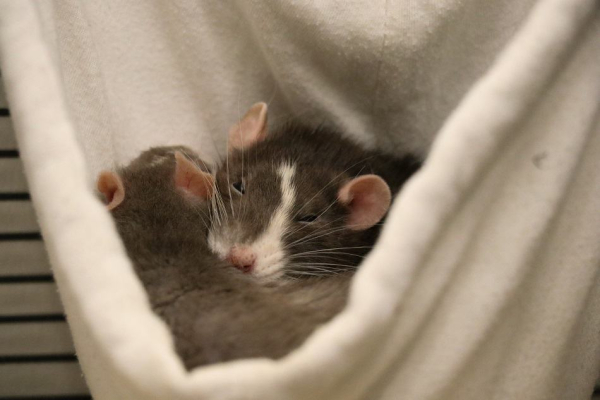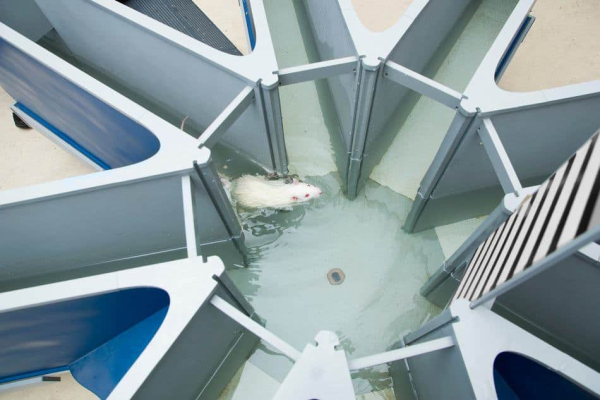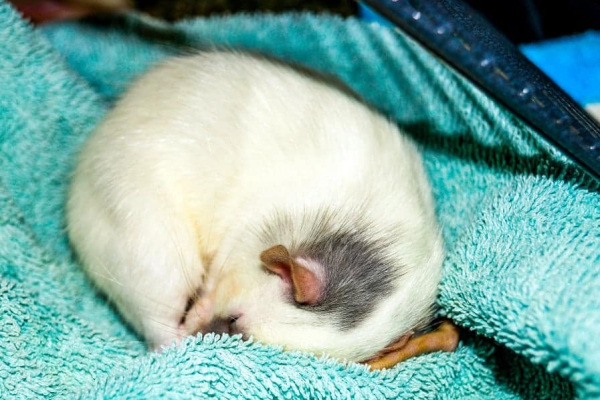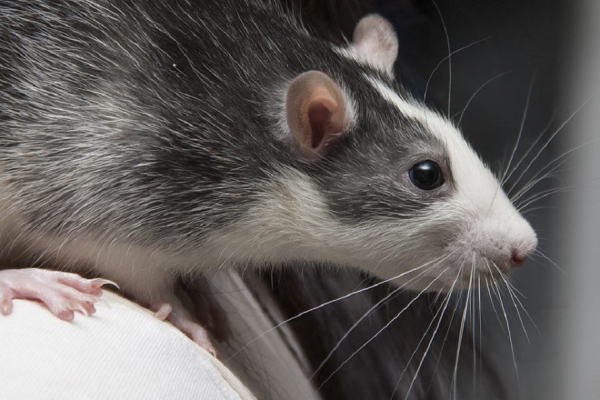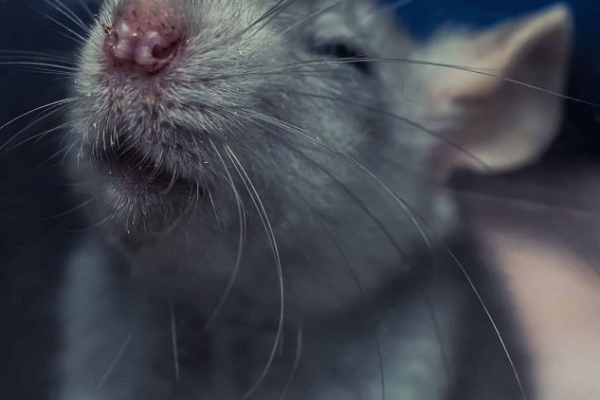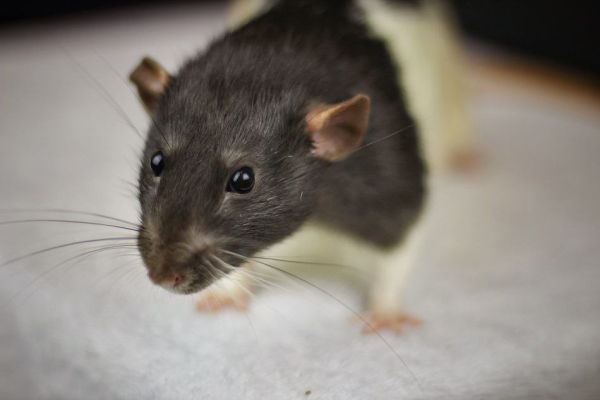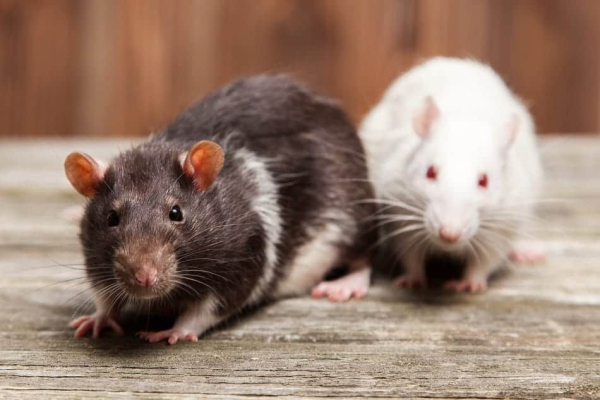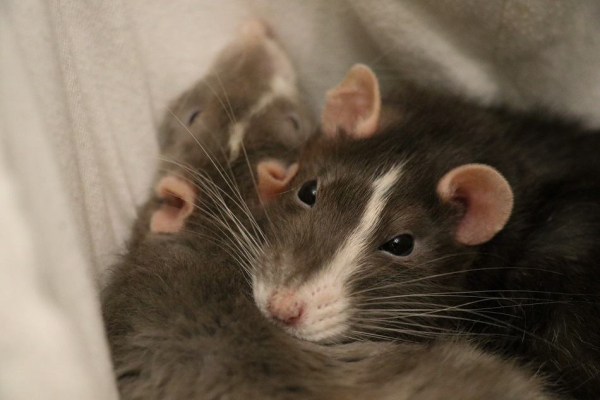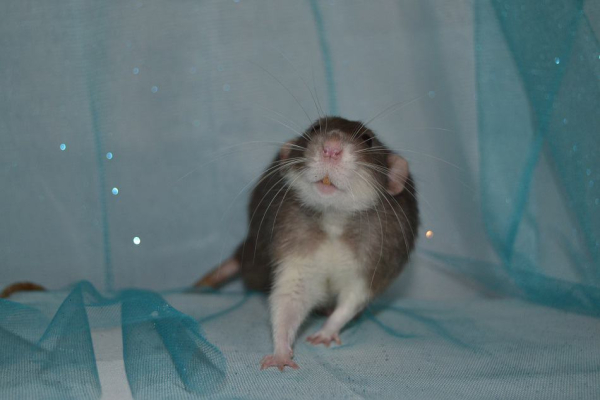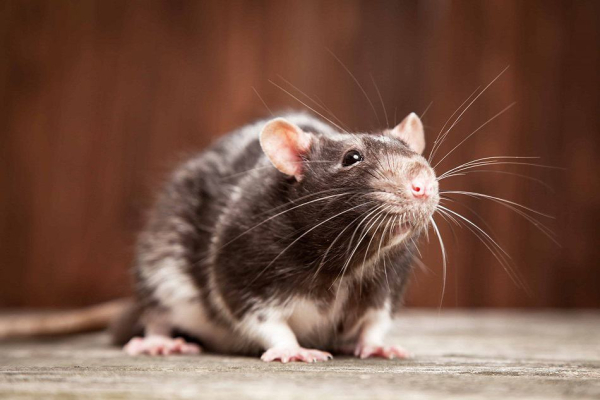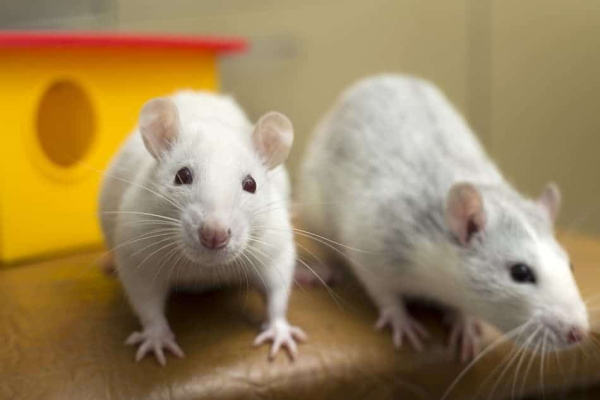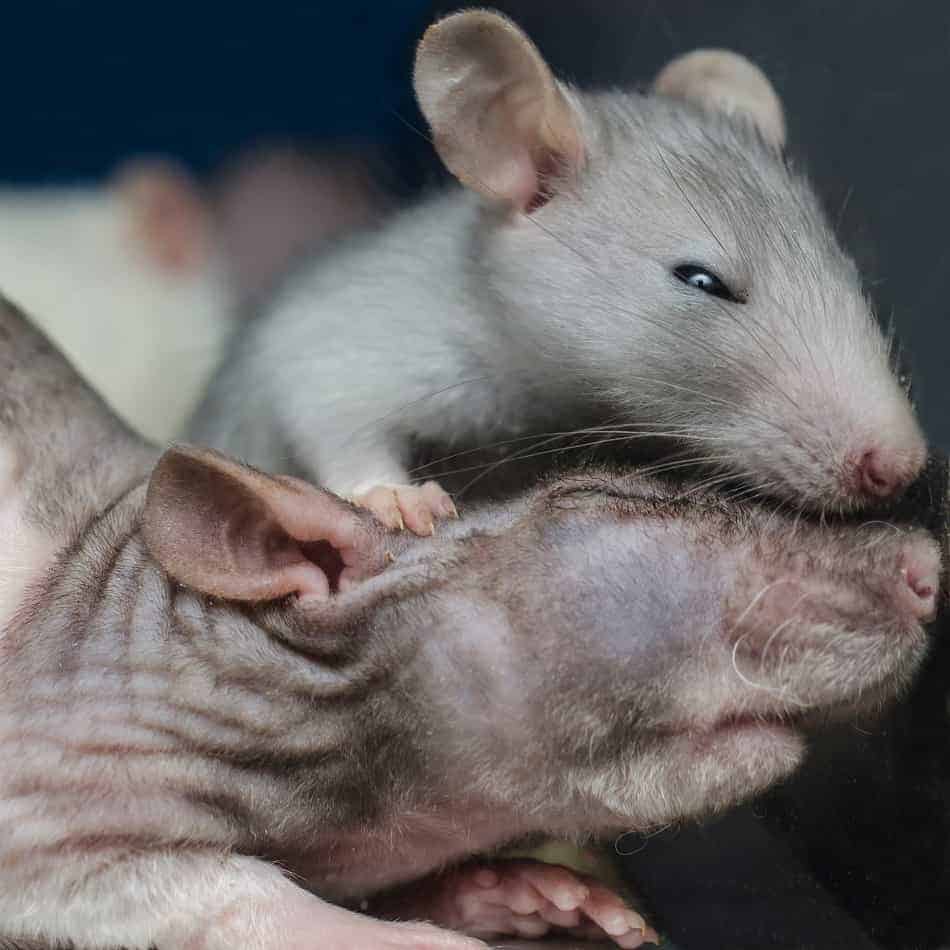
Pet rats act very socially towards their owners and especially the other rats that they live with. They’re not as happy by themselves and they really thrive when they live with other rats.
They interact with each other so much throughout the day, and sometimes when they play it can look kind of aggressive.
That can make it slightly harder to tell if your pet rats are playing or fighting.
Wrestling and non-aggressive pinning, along with bouncing around and pouncing on each other is considered playing. While lunging, biting, kicking and aggressive shoving or any actions that lead to blood being shed are considered to be fighting.
If you see your pet rats displaying any of these behaviors with hostile intent, it may be time to take action and step in and carefully separate them.
When Your Pet Rats Are Playing
Playing around and actually fighting is very common among pet rats. It may be hard to tell the difference since rats like play-fighting all the time, and in most cases you shouldn’t worry too much.
Rats usually start to play-fight at a young age so they can establish a hierarchy that they will follow even when they are older.
The young ones find these games fun and sometimes continue play-fighting as adults. When it comes to how to tell when your rats are playing, their demeanor and age tell a lot.
The play-fighting behavior is most common in young rats and usually involves a lot of:
- Bouncing
- Wrestling
- Non-aggressive pinning
The pinned rat will get back on their feet fast enough and continue pouncing on the other rat playfully.
What really separates playing from actual fighting is how aggressive they are or if your rats show affection when they interact with each other.
Pet Rats Play-fighting
Do pet rats play-fight is another common question, and the answer is yes they do.
One of the common play-fighting behaviors is pinging, a behavior that is sometimes compared to children playing tag.
Pinging rats will appear tensed, but they will pounce on their opponents and then leap around the cage before coming back and pouncing on them again.
Pinging is also more common in young rats than adults, but some adults participate in it as well. Another common way they play-fight is by pouncing.
One rat will try to leap on their opponent to mount them without necessarily aiming at them.
Unlike real fights when the pouncing is actually targeted with the attacking rat standing on their hind legs before leaping, play-fight pouncing is less serious.
Is It Normal For Pet Rats To Play-fight?
Rats, like every other animal, like to assert dominance. Especially when confined in the same space together because they’re domesticated.
So it’s normal for your pet rats to pay-fight all the time, they do it almost every day.
They like to play fight usually as a way of trying to establish dominance or form a hierarchy that they will follow when they are older.
Play-fighting starts when they are about three months old, it can start out light and playful but it can get more serious as they become older.
At a young age, it doesn’t matter who wins the play-fight, but as they become teenagers, between 6 to 12 months, the winner begins to matter as it shows who will be at the top of the hierarchy.
Play-fighting is common among siblings and pet rats that are introduced to each other and get along.
How To Tell When Your Pet Rats Are Actually Fighting
One of the ways of knowing whether a fight is real is if one of your rats has fluffed up fur and is wagging their tail. Other ways can include:
- Sidling
- Lunging at each other
- Aggressive kicking
- Shoving
In a behavior known as sidling, one rat will move towards the opponent moving sideways with their head low and their tails moving sideways and will either lunge at the opponent or kick them sideways.
The side shoving and kicking are associated with dominant behavior, but lunging and biting are more aggressive.
Another common behavior is shoving. The attacking rat will move towards the opponent sideways but will attack by shoving instead. The fight will escalate depending on the reaction of the victim rat.
If they walk away, the attacker will usually stop the attack, but if the victim retaliates, the fight will increase and become more aggressive.
In some cases, the attacking rat will pass swift kicks sideways towards the stomach of the victim.
Pinning is also common in actual fights, but sometimes they pin each other for grooming purposes.
Playful pinning usually involves the attacking rat moving away and giving the other rat a chance to get up and pounce back on them.
However, sometimes the pinned rat will not submit, leading to the escalation of the fight.
Why Do Pet Rats Fight?
The reason that pet rats fight is the same as with most other animals that are kept in groups. They mostly do it for dominance.
Rats that grow up together will often have an established hierarchy when they are older.
Pet rats can show dominance and sometimes it can last for a while so when you introduce two new rats, they will start to fight to assert dominance.
They could also act out when their environment changes. For instance, if you use a new product to clean the cage, the rats may be confused and may start fighting to establish dominance even if they already had a hierarchy.
Sometimes fights also happen due to hormonal changes. Young rats may suddenly experience new hormones and will lash out at their cagemates by acting aggressively.
Is It Normal For Pet Rats To Fight?
Play fighting between rats is normal, and actual fighting is normal behavior as well.
The actual fighting isn’t usually dangerous and will only last for a few seconds.
However, there may be cases when the fighting gets too serious, leading to injuries.
While there is nothing you can do about play-fighting, you could try to take some measures that prevent actual fighting.
For instance, you could avoid cleaning the cage with new products and allow the rats to assert dominance without interfering so long as it is harmless.
It’s important for you to let them establish dominance so that there are fewer problems in the future.
How To Prevent Fighting Between Your Pet Rats
When it comes to preventing fights between your rat pets, especially new ones, you could introduce them slowly.
Try allowing them to get used to each other, especially if there was already dominance. This way, the dominant rat will not feel threatened by the newer rat.
Distraction can also work, especially if the fighting starts to become aggressive or actually violent.
One of the ways some pet rat owners achieve this is by spraying them with water.
Have a bottle of water in hand as you monitor them and spray them when the fighting starts to get too serious. This will separate them without hurting either of them.
Another option is to cover the more aggressive rat with a piece of cloth without removing them from the cage.
Covering their eyes for a few seconds will prevent them from seeing each other, which can sometimes be enough to stop the fighting.
Separating Your Pet Rats After A Fight
If you notice that they are fighting too frequently, you may have to separate them. You can still keep them in the same cage but separately.
This can be done with the split cage method where you split the cage in half with a material that they can still see through but can’t get through.
As long as your keeping watch over their cage material like mesh or small wire fencing can do a great job of this.
This allows them to still be with and around each other without giving them the opportunity to physically fight. They’ll be able to see, interact, and be social with each other through the fencing safely.
Using the split cage method is for when you need to separate them because of unresolved aggressive fighting.
Thankfully fighting doesn’t take place constantly, so most of the time there’s nothing to worry about and you won’t really need to do anything.
Play-fighting and actual fighting are very normal behaviors that pets rats display throughout their lives.
Fighting Can’t Always Be Avoided
Remember that it’s important to let them go through this without separating them so they can establish dominance within their group or pairing.
The only time you should separate your rats is if they are aggressively fighting with no resolution.
If you feel like their fighting has gone on for too long and you want to separate them, it should be done very carefully so you don’t hurt yourself or your pets.
If a serious fight does happen, make sure to check your pet rats for any injuries.
If you think one of your pet rats was actually injured during a fight then it’s a good idea to get medical advice from a Vet. That way you can make sure your pet rats remain healthy and happy.

